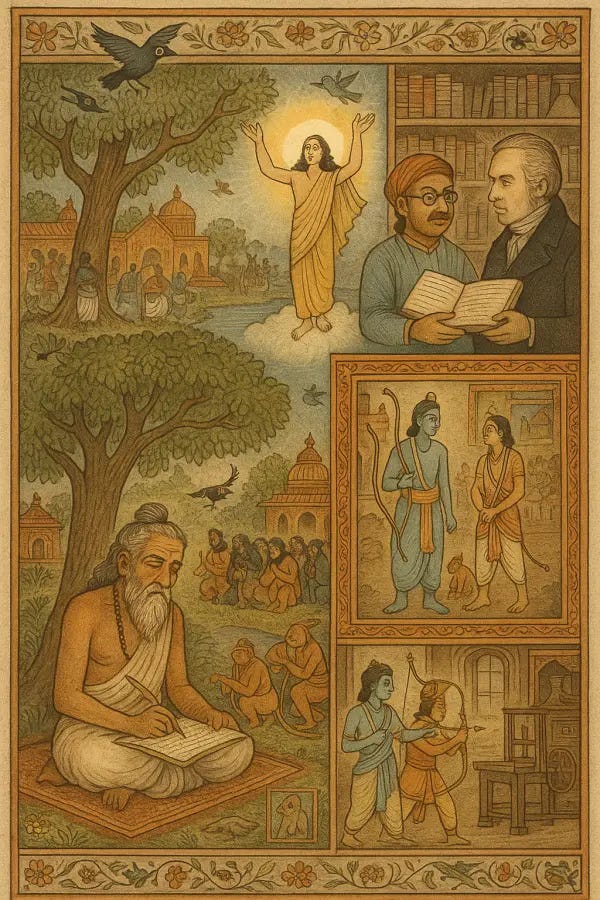More on the Ramayana of Krittibas.
The Ramayana of Krittibas was written in the fifteenth century some years before the birth of Chaitanya Mahaprabhu, as per historians. Krittibas is said to have completed his work between 1467 and 1472 AD. Chaitanya Mahaprabhu was born in 1486.
The earliest manuscripts of this text that are available are from the period when Chaitanya Mahaprabhu was alive. Given the fervor among the people for Chaitanya and his teachings in that period, there seems to be a notion that the text that is available today with us, of the Ramayana, is not what Krittibas had originally written. Chaitanya Mahaprabhu's influence was prevalent in the texts that were written in that period in Bengal. This seems to be the reason why Krishna made an appearance in this version. Also, the way the vanaras bow down are signs of Vaishnava devotion.
Jayagopal Tarkalankar was a renowned Sanskrit scholar who was said to have been born in 1775. In 1800 Jayagopal met the missionary William Carey. In 1801 Serampore Mission Press was started. Carey was interested in the Bengali language and wanted the local people to study the language. In 1803 he requested Jayagopal to edit and publish the Ramayana of Krittibas and the Mahabharata of Kashidas. It is said that when he began reviewing the text of the Ramayana written by Krittibas, he found out that the language would not be easy to understand for the common people. Thereby, he had to make changes in the text. In 1802 Jayagopal brought out the Ramayana in 5 volumes. After Jayagopal moved out from Serampore, he worked on more refined editions and the subsequent editions of the Bengali Ramayana and Mahabharat were printed by Battala press, Kolkata.
A list of what is there in the Bengali version which is not there in Valmiki's Ramayan. This is not an exhaustive list.
Ratnakar saying Mara under the guidance of Brahma - reference from Adhyatma Ramayana.
Ugrachanda leaves Lanka when Hanuman asks her to. This is referred to in Brihaddharma Purana.
Lav Kush and the fight with Rama and his brothers is referred to in Jaimini Bharata.
Subscribe for more such content



